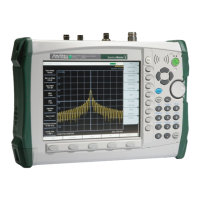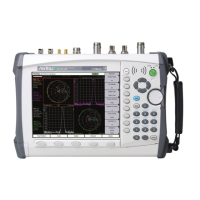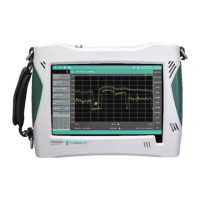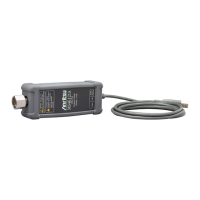2-5 Notational Examples Chapter 2 — Programming with SCPI
2-8 PN: 10580-00322 Rev. F S331L PM
2-5 Notational Examples
Table 2-4 provides examples of valid command syntax:
Command statements read from left to right and from top to bottom. In the command
statement above, the :FREQuency keyword immediately follows the :SENSe keyword with
no separating space. A space (sp) is used between the command string and its argument.
Note that the first keyword in the command string does not require a leading colon; however,
it is good practice to always use a leading colon for all keywords. Note also that the :SENSe
keyword is optional. This is a SCPI convention for all voltage or signal source type
instruments that allows shorter command statements to be used.
The following is an example of a multiple command statement that uses two separate
commands in a single statement:
:FREQuency:STARt 10E6;:FREQuency:STOP 20E9
Command Terminators
The <new line> character (ASCII 10) in the last data byte of a command string is used as a
command terminator. Use of a command terminator will reset the command path to the root
of the tree.
Table 2-4. Creating Valid Commands
Command Specification Valid Forms
[:SENSe]:FREQuency:STARt
<frequency>{Hz|kHz|MHz|GHz}
The following all produce the same result:
:SENSe:FREQuency:STARt 1 MHZ
:SENS:FREQ:STAR 1 MHZ
:sense:frequency:start 1000000
:FREQ:STAR 1000 KHZ
:CALCulate:MARKer#:X
<value>{Hz|kHz|MHz|GHz,m|cm|mm,ft}
The first 2 commands set the location of
marker 1. The third command sets the location
of marker 2.
:CALC:MARK:X 1 GHZ
:CALC:MARK1:X 1 GHZ
:CALC:MARK2:X 2 GHZ
:INITiate:CONTinuous OFF|ON|0|1 The following commands are identical:
:INITiate:CONTinuous OFF
:init:cont 0
Note
A semicolon is used to join the commands and a leading colon used immediately
after the semicolon to start the second command.
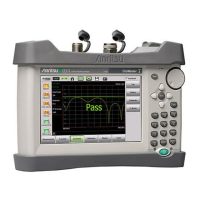
